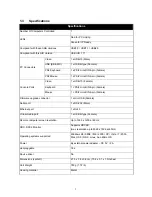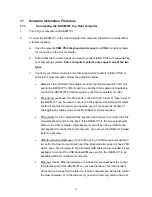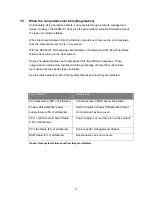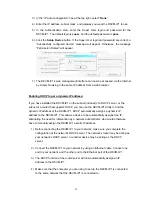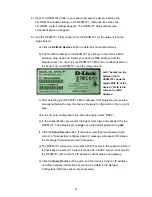
1 Introduction
NOTE: In this manual, the term “Host” and “Host system” refers to the computer or
server that is connected to the DKVM-IP1. This is therefore the computer/server that can
be remotely controlled from a “Remote” computer by an administrator, or “Remote-side
user”. The term “Host Console” refers to the redirected view of the video monitor that is
connected to the “Host” computer – as it is displayed in a window on the Remote
computer that is controlling or monitoring the Host system. The term “local” refers to
things that are in close physical proximity to a specified system. For instance, the “local”
console (KVM controls) of the Host system will be redundant during the periods when the
Remote-side user controls the Host system with his or her “local” console. For the
purpose of clarity, these terms will be capitalized in sentences where it needs to be made
clear that the term refers to the user-manual-specific definition of the word (Remote, Host,
Local, etc.), and not the general definition of the word.
The DKVM-IP1 provides convenient, remote KVM access and control via LAN or Internet.
It is installed on the Host side and transmits a Remote computer’s control INPUT (mouse
and keyboard) to the Host computer. It also captures, digitizes, and compresses the
video OUTPUT signal of a Host computer and then transmits it to the Remote computer.
This DKVM-IP1 provides a non-intrusive solution for remote access and control all the
way down to the BIOS level of the Host. The remote access and control software only
runs on the device’s embedded processors, not on mission-critical servers, so it does not
interfere with server operations, or affect network performance.
This means that administrators can securely gain BIOS-level access to remotely located
computers for maintenance, support, failure recovery, and even remote wakeup over the
Internet or LAN. All communications are secured by SSL authentication and encryption.
This DKVM-IP1 can be used in conjunction with a KVM Switch for remote access to
multiple computers.
4








